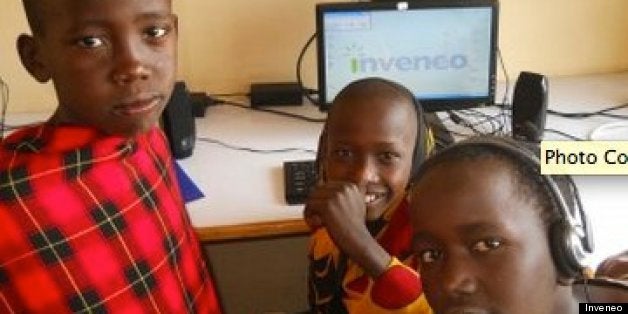
By Marta Belcher, Juris doctorate candidate at Stanford Law School
A rumor that the FCC released a proposal last month for nation-wide, free, public Wi-Fi was quickly dismissed as wishful thinking, but sparked a much-needed national conversation about the digital divide.
Kristin Peterson, co-founder and CEO of Inveneo, has been preoccupied with disparities in technology access at a global level since 2004. Inveneo, a nonprofit social enterprise, delivers affordable (but not free), reliable, and sustainable broadband to communities in developing countries. According to Peterson, approximately 90 percent of the population in the developing world is without reliable Internet access, and in the few places where Internet is available at all, the cost per megabyte can be 200 times the cost in the developed world.
Peterson has heard arguments that providing basic necessities like food, clean water, and health care should take priority over digital inclusion in developing countries but she argues that Internet access is a powerful economic catalyst. Indeed, in 2011, the United Nations classified broadband connectivity as a basic human right. In a recent blog post, Inveneo's Aaron Mason argues that given the choice between indoor plumbing and access to communication technology, people in developing nations might well prefer the latter.
"For rural farmers, just knowing the [global] market prices for what they're selling could mean getting a couple dollars more per day," Peterson said. "That small difference could then, for example, enable them to send their children to school."
On a large scale, the pay-off of such investments could be "leapfrogging" over traditional growth models -- that is, skipping over the technologies widely available in the "developed" world in the 20 century, straight to their higher-tech successors.
Technological leapfrogging in the developing world has its limits -- particularly when that technology requires both traditional and digital literacy. More importantly, when organizations like Inveneo distribute cutting-edge technology with the hope that it will help developing countries catch up with more basic necessities, they run the risk of imposing donor-centric solutions rather than responding to local needs. Misguided aid efforts to send hundreds of thousands of t-shirts to Africa, for example, were widely criticized for tanking local African clothing markets, and led to the acronym "SWEDOW" ("Stuff We Don't Want") to describe items that philanthropists mistakenly assume recipients will appreciate.
Peterson is refreshingly sensitive to these pitfalls. "We don't approach projects with a solution in mind but rather with an understanding of how technology can transform lives," she says. "We have to be sure that we have the right kind of technology for the particular community."
Indeed, the task of donating and installing Internet infrastructure is relatively miniscule compared to providing ongoing training and support. Working with people on the ground is essential to ensure that these solutions continue to function after the giant ribbon has been cut and the photo-op is over.
"Deploying the technology itself is not enough," Peterson said. "What we do is local capacity-building. We identify local IT entrepreneurs and train them on how to deliver the network or computer lab, and we hope that they will use those skills on more projects after we're gone."
By focusing on the long-term impact on local economies, Inveneo prudently sidesteps many of the issues with international nonprofits that critics raise. When asked about this success, Peterson points out that Inveneo is not a charity, but rather a social enterprise that operates "like a business with a social mission." Could it be that "doing business" with developing communities might lead to more constructive interactions than simply "doing good"?
Oscar Wilde wrote, "charity degrades and demoralizes" -- a sentiment that is echoed in the contemporary phrase "philanthropic colonialism." The Western fantasy of "saving" Africa (and other "developing" areas) relies on problematic assumptions of cultural superiority. The term "developing world" itself implies a predetermined growth trajectory culminating in the achievement of the Western ideal. The goal of endowing developing countries with Western technology might ring of colonialism's mission of civilizing the natives.
Furthermore, the grant money that funds many philanthropic efforts comes from the same large corporations that have often been accused of systematically exploiting developing nations for labor, natural resources, and pollution outlets. Slavoj Žižek, dubbed "the world's hippest philosopher" much to his own chagrin, calls this "repairing with the right hand what [was] ruined with the left hand." Žižek points to the TOMS model of donating one pair of shoes for every pair that consumers buy as an "absurd example" of cultural capitalism. Companies that conspicuously donate to charity build the "exploitative global structure that produces economic inequality" while maintaining the illusion that their philanthropy repairs it.
Yet it cannot be that every international attempt to improve the quality of life for others does more harm than good. Critics argue that shoelessness is a symptom of poverty (or a cultural preference), and TOMS should instead help to eradicate poverty itself by creating jobs in the communities it serves. Engaging local economies is precisely the aim of many social enterprises, as exemplified by Inveneo and the popular microloan site Kiva. Will social entrepreneurship erode the deeply entrenched institutional and political forces that lead to the gap between the "developing" and "developed" worlds in the first place? Probably not, but if we're going to leap over the global digital divide, it might give us a running start.
Marta Belcher is a writer for Student Reporter. We are a journalism incubator and online media outlet, providing media coverage of events and featuring current topics in management and economics around the world.
This post is part of a series produced by The Huffington Post and the Schwab Foundation for Social Entrepreneurship, in recognition of the latter's Social Entrepreneurs Class of 2013. To see all the post in the series, click here.
For more of our work, visit us on studentreporter.org.
Feature Image: Children in Maasai Mara, Kenya use technology deployed by Inveneo, a nonprofit social enterprise; Source: Inveneo.